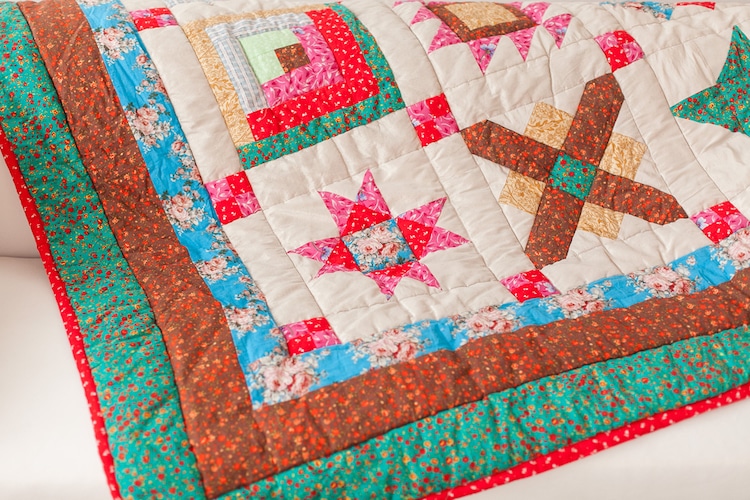Quilting is a timeless craft that combines creativity with the coziness of homemade textiles. For many, it’s a hobby that offers solace and artistic expression. For others, it evolves into a profitable venture. Below, you’ll find invaluable tips and insights to help you stitch your way to quilting success.
Essential Tools and Materials for Quilting Success
Every quilter’s journey begins with assembling the right tools and materials. A reliable sewing machine designed for quilting is a fundamental investment, as it should offer a wide throat space and durable construction.
Rotary cutters, self-healing mats, and clear acrylic rulers are indispensable for precise cutting, which is crucial for uniform quilt blocks. High-quality thread designed specifically for quilting helps prevent fraying and breaking, ensuring smooth, long-lasting stitches.
Moreover, engaging with the community at local quilt stores can provide you with not only materials but also knowledge and inspiration. These stores often offer classes for different skill levels and serve as a hub for sharing techniques and troubleshooting common quilting challenges.
Understanding Quilt Patterns and Design Principles
Patterns are the blueprint of any quilt, and understanding how to read and follow them is vital. Beginners should start with simpler designs, gradually moving toward more intricate patterns as they gain confidence. Learning the basic quilt block constructs, such as squares, triangles, and strips, helps in grasping how more complex patterns are assembled.
Design principles such as balance, contrast, and harmony are essential in creating visually appealing quilts. A balanced arrangement of quilt blocks can give a sense of stability, while contrast can be achieved through varied fabric colors and textures to add interest.
Color theory plays a significant role in quilt design. A good understanding of the color wheel and the principles of color harmony (complementary, analogous, and triadic schemes) can help quilters choose fabrics that will result in a pleasing final product.
Mastering Quilting Techniques for Consistent Results
There are several quilting techniques, each offering a unique texture and aesthetic to the finished quilt. For example, hand quilting imparts a traditional, artisanal feel, but requires patience and skill. Machine quilting, on the other hand, is faster and can range from utilitarian straight lines to intricate free-motion designs.
Practicing the art of precise piecing is essential for a professional-looking quilt. Consistent seam allowances and accurate pressing are key factors that impact the alignment of quilt blocks. It is beneficial to first test a new technique on scrap fabric or a sampler quilt to avoid costly mistakes on the actual project.
Binding is the final step of the quilting process, encasing the raw edges for a clean finish. Techniques vary from machine binding for durability to hand-finished bindings for an invisible seam. Whichever method you choose, it’s important to ensure that the binding is evenly distributed and free from puckers.
Tips To Choose the Right Fabric and Color Combinations
Selecting fabric for a quilt is both an artistic and practical decision. Quilters should look for quality fabric with a tight weave to prevent stretching and ensure longevity. Pre-washing fabrics can prevent future shrinkage and color bleeding, maintaining the quilt’s size and vibrancy over time.
The color palette of a quilt can be inspired by anything from nature to artwork. However, it’s essential to consider the intended use of the quilt. For example, quilts for children might benefit from bright, primary colors, while a calming bedroom might call for soothing pastels or neutrals.
Texture can add dimension to a quilt. Mixing solids with prints, or incorporating fabrics like batiks or linen, can create visual interest. Yet, it’s important to consider how fabrics will interact when stitched together, as some materials may require different sewing methods or needle types.
Marketing Your Quilts: Turning Passion Into Profit
For those looking to turn their quilting hobby into a business, understanding the market is crucial. Artisan quilts can fetch a premium if they cater to a specific niche, whether it’s custom baby quilts, heritage-based designs, or modern, graphic patterns.
Branding and packaging are often overlooked aspects of selling handmade items. Creating an attractive brand for your quilts can include having a distinctive label sewn onto each piece and professional-looking packaging for shipping or gift presentation.
Online marketplaces and social media platforms offer great opportunities for showcasing and selling quilts. High-quality photographs and detailed product descriptions enhance online listings, while social media can be used for engaging with potential customers and growing a following.
Overall, quilting success arises from a blend of passion, precision, and practical business sense. By mastering the essential skills, understanding design principles, persistently pursuing quality, and smartly marketing creations, quilters can revel in the pride of crafting heirloom-quality quilts that garner both admiration and profit.



